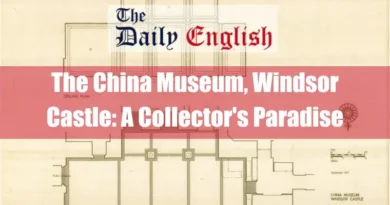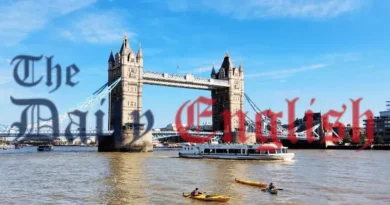Here is an Informational Table for the summarized overview of the article:
| Feature | Details |
|---|---|
| Location | Windsor, Berkshire |
| Nearest City | London |
| Area | 2,020 hectares (5,000 acres) |
| Owned by | Crown Estate |
| Public Transit Access | – Windsor and Eton Central – Windsor and Eton Riverside – Virginia Water |
| Website | Official website |
| Designations | – National Register of Historic Parks and Gardens – Official name: Windsor Castle and Home Park – Designated: 31 August 1999 – Reference no.: 1001434 |
| Historical Overview | Windsor Great Park has been a royal hunting ground since the mid-13th century, initially serving Windsor Castle. It has undergone various phases of development, serving different purposes throughout history. Today, it is managed by the Crown Estate and remains a significant cultural and natural landmark, open to the public for recreational use. |
| Notable Features | – The Long Walk – Virginia Water – Savill Garden – The Valley Gardens – Smith’s Lawn – The Deer Park – The Copper Horse – Cumberland Lodge – Royal Lodge |
| Wildlife and Ecology | Windsor Great Park is home to a diverse range of flora and fauna, including ancient oaks and various species of deer, birds, and fungi. The park is nationally recognized for its ecological significance, particularly its fungal diversity, with over 1,000 species recorded, including some of Britain’s rarest fungi. |
| Recreational Activities | – Walking and hiking – Cycling – Horse riding – Picnicking – Boating and fishing at Virginia Water – Polo events at Smith’s Lawn |
| Cultural and Historical Events | Windsor Great Park hosts numerous events, including royal ceremonies, public festivals, and cultural exhibitions. It has also been the venue for significant historical moments and remains a popular destination for both locals and tourists. |
| Visitor Information | – Opening Hours: Dawn to dusk, varies by season – Entry Fees: Free entry, except for Savill Garden – Facilities: Cafes, restrooms, parking available – Accessibility: Accessible by foot, car, and public transport, with facilities catering to disabled visitors – Guided Tours: Available – Safety: Visitors are advised to follow park guidelines for a safe experience |
| Conservation Efforts | Windsor Great Park is committed to environmental sustainability, with ongoing initiatives to protect its natural habitats and historical features. This includes habitat restoration, wildlife conservation, and partnerships with environmental organizations to ensure the park’s long-term ecological health. |
| In Popular Culture | The park has been featured in various works of literature and media, often noted for its historical and scenic value. It is associated with legends like Herne the Hunter and continues influencing British landscape design. |
| Historical Significance | Windsor Great Park is historically significant as a royal hunting ground and a symbol of British heritage. Its management by the Crown Estate and designation as a Grade I listed park underline its importance. |
| Notable Buildings | – Royal Lodge – Cumberland Lodge – Cranbourne Tower – The Royal Chapel of All Saints |
| Special Designations | – Site of Special Scientific Interest (SSSI) due to its fungal diversity |
| Future Plans | Ongoing conservation efforts aim to maintain and enhance Windsor Great Park’s natural beauty and historical significance. Future plans include expanding educational programs and increasing accessibility for a broader audience. |
Let’s discuss in detail:
Introduction
Location and Size
Windsor Great Park spans 2,020 hectares (5,000 acres) and is located south of Windsor, on the Berkshire and Surrey border. It includes a 265-hectare (650-acre) deer park adjacent to the private Home Park near Windsor Castle.
Historical Background
The park has served as the private hunting grounds for Windsor Castle since the mid-13th century. It was once part of a larger area known as Windsor Forest or Royal Park, which was much larger than its current size.
Management and Public Access
Managed by the Crown Estate, Windsor Great Park is the only royal park not overseen by The Royal Parks. Most of the park is open to the public free of charge from dawn until dusk, though there is an entrance fee for the Savill Garden.
Geography and Features

Landscape
Windsor Great Park features a gently rolling landscape, combining deer lawns, small woods, and coverts, interspersed with ancient solitary oak trees. The park is home to several small rivers, including the Battle Bourne, which flows into the Thames near Datchet, and the River Bourne, which feeds various ponds, such as the Great Meadow Pond and Obelisk Pond.
Prominent Locations and Access Points
The park’s most notable hill is Snow Hill, from which the Long Walk, a tree-lined avenue, leads directly to Windsor Castle. Key access points include Queen Anne’s, Ranger’s, and Cranbourne Gate. The A332 road, or Sheet Street, runs through the park’s northeast section.
Community and Buildings
The Village, located on the park’s western side, was constructed in the 1930s to house Royal estate workers and includes a village shop and a school. The Royal Lodge, Cumberland Lodge, Cranbourne Tower, and Norfolk Farm are other significant buildings in the park. The park mainly lies within the civil parish of Old Windsor, extending into the Borough of Runnymede and the parishes of Winkfield and Sunninghill.
Ancient Oaks and Notable Trees
Ancient Oaks
Windsor Great Park hosts one of Western Europe’s largest collections of ancient oaks. King Offa’s Oak is the most famous, estimated to be between 1,300 and 1,500 years old, making it the oldest oak in the UK after the Pontfadog Oak collapsed. Other notable ancient trees include the Bowthorpe Oak and the Marton Oak in Cheshire, the latter being the widest tree in the UK.
Famous Trees
Another renowned ancient tree in the park is the Conqueror’s Oak in Cranbourne Park. These trees are natural marvels and historical symbols deeply tied to the park’s rich heritage.
History of Windsor Great Park

Formation
Windsor Castle, a historic fortress, was established in the 11th century by William the Conqueror. The site was chosen for its strategic defensive position overlooking the River Thames.
The surrounding area, known as Windsor Forest, was reserved by the monarchy primarily for hunting and providing resources like wood, deer, boar, and fish for the castle. By 1129, the first official “parker” was appointed to manage the forest.
In 1240, King Henry III formally defined the borders of a much larger park. During this time, the castle served mainly as a fortress, with monarchs staying at the more comfortable Manor Lodge in Old Windsor when hunting.
The title of “Parker” evolved into what is now known as the “Ranger of the Park,” a role currently held by Charles III. Historical records show that kings like Edward I and III used the park for various activities, including jousts and tournaments.
Edward III even kept a royal stud in the park to supply horses for the Hundred Years’ War. The park’s moat at Bear’s Rails once housed the manor of Wychamere, home to William of Wykeham, who was responsible for building parts of the castle.
Development
By the 18th century, the park shifted from a food resource to a more decorative and leisurely space, reflecting the tastes of the new Hanoverian monarchs. King Charles II laid out the famous Long Walk, a grand avenue of elm trees, completed by William of Orange in the 1680s. These trees were replaced during World War II.
The park saw further enhancements under George III, who commissioned monuments like the Copper Horse, depicting him as a Roman Emperor, and the Obelisk, in honour of William, Duke of Cumberland. George III also brought ancient Roman ruins from Libya to the park to increase its grandeur. In 1746, Virginia Water, a large artificial lake, was initiated under the direction of William, Duke of Cumberland.
The lake was originally smaller. Later, in the late 18th century, Paul and Thomas Sandby expanded it. They added features such as an artificial waterfall, Meadow Pond, and Obelisk Pond. These additions made the lake and its surroundings a major attraction, enhancing the park’s scenic and recreational appeal.
Victorian Expansion
Queen Victoria’s Influence
Queen Victoria significantly shaped Windsor Great Park as we know it today. The Windsor Castle Act of 1848 was introduced to reform land use and rights around the castle, leading to the removal of some existing roads and the creation of new ones, redirecting traffic away from the Home Park.
These changes coincided with Queen Victoria’s retreat from public life following the death of Prince Albert. She built the Royal Mausoleum at Frogmore for her late husband, where she was later buried alongside several other royal family members.
Agricultural Significance
During the 19th and early 20th centuries, Windsor Great Park was renowned for its annual Christmas stock sale from the Royal Windsor Estates. These sales attracted buyers from across the country and featured superior fat heifers, fat ewes, and fine old wether sheep, highlighting the park’s continued agricultural importance at the time.
Aviation
In the 1920s, Smith’s Lawn, an area within the park, became a site for aviation activities, continuing into the early 1950s. The Prince of Wales, later Edward VIII, frequently flew aircraft from here, including de Havilland planes. A notable event occurred on 29 April 1931, when Gordon Olley landed a large twin-engine Imperial Airways airliner, the Armstrong Whitworth Argosy, at Smith’s Lawn. In 2016, the Duke of Edinburgh unveiled a memorial at Smith’s Lawn to commemorate its use as an airfield, marking his first solo flight from the site in 1952.
World War II and Post-War Developments
Windsor Great Park was crucial during World War II, hosting a factory dispersal site for Vickers-Armstrongs, where Wellington bombers were built and maintained. The park also served as a Relief Landing Ground for de Havilland Tiger Moth, trainers from nearby No. 18 Elementary Flying Training School at Fairoaks.
Troops were housed in the park, and much of the deer park was ploughed and farmed for food, leading to the felling of hundreds of ancient trees. Over 200 large bombs, including several V-2 rockets, fell on the park. During the 1948 Summer Olympics, the park hosted the road cycling event.
Post-War Transition
In the 1950s, Windsor Great Park gradually transitioned into a public recreation area. The Savill Gardens, neglected during the war, were replanted, and the new Valley Gardens were established. In 1951, a large wall for creeping plants was constructed at Savill using bricks from bombed-out buildings in London. A Totem pole, a gift from British Columbia to the Queen, was installed nearby in 1958.

Protests and Cultural Events
Windsor Free Festival
In 1972, Irish anarchist Ubi Dwyer organized the first Windsor Free Festival in Windsor Great Park, attracting 700 attendees. The event and subsequent festivals became controversial, with organizers claiming the park had been common land until the 18th century and was illegally enclosed by George III. These protests led to the introduction of Windsor Great Park regulations in 1973. However, the 1974 festival was violently broken up by police, resulting in numerous arrests and the eventual banning of the event.
Dwyer was later jailed for distributing leaflets promoting another festival. Sid Rawle, another organizer, was imprisoned for reproducing parts of Dwyer’s leaflets in the underground newspaper International Times. These events highlighted the tension between public access and royal ownership, marking a period of social and cultural upheaval within the park.
Features of Windsor Great Park
Enclosed Deer Park
The modern enclosed deer park at the northern end of Windsor Great Park is home to a large herd of semi-wild red deer. This area preserves the park’s original medieval purpose, maintaining a connection to its history as a royal hunting ground.
The Long Walk

The Long Walk is a tree-lined avenue stretching 2.64 miles (4.25 km) from Windsor Castle to Snow Hill. Originally established as a path to Snow Hill, it is said to be where Henry VIII awaited news of the execution of his second wife, Anne Boleyn. After the Restoration of the monarchy in 1660, Charles II had double rows of elm trees planted along the Long Walk, inspired by the gardens at the Palace of Versailles, which he had seen during his exile.
This was one of Charles II’s first major projects to enhance Windsor Castle and its surroundings. In 1710, Queen Anne had the central path replaced by a road to allow coaches to use the route to enter and leave Windsor Castle.
The Copper Horse
At the southern end of the Long Walk, atop Snow Hill, stands the Copper Horse, a bronze statue of King George III depicted as a Roman Emperor. Erected in 1829, it is 2.65 miles (4.26 km) from the George IV Gateway at Windsor Castle. The park also features equestrian statues of the Prince Consort and Queen Elizabeth II.

The Royal Lodge
The Royal Lodge, located in the centre of Windsor Great Park, was originally built as the Deputy Ranger’s house. It became a retreat for the Prince Regent in 1812, but much of the original structure was removed after his death.
The remaining parts were renovated in the 1930s to serve as a home for the Duke and Duchess of York, who later became King George VI and Queen Elizabeth. Today, the Royal Lodge is Prince Andrew, Duke of York’s official residence and is not open to the public.
The Royal Chapel of All Saints
Constructed in 1825, the Royal Chapel of All Saints was built to accommodate the growing number of household staff, as the chapels of the Royal and Cumberland Lodges had become too small.
Designed by Jeffry Wyattville and later remodelled in the Gothic Revival style by Samuel Sanders Teulon and Anthony Salvin, the chapel was frequently used by Queen Victoria and, more recently, by Queen Elizabeth II during her stays at Windsor.
Cumberland Lodge
Cumberland Lodge, built in 1652 during the Commonwealth, became the home of the Ranger of the Great Park after the monarchy was restored in 1660. Notable occupants include Sarah Churchill, Duchess of Marlborough, and Princess Helena, daughter of Queen Victoria, who lived there for over fifty years.
The lodge played a role in significant historical events, such as discussions on King Edward VIII’s abdication crisis. Since 1947, it has been home to the St. Catharine’s Foundation, now known as Cumberland Lodge, an educational charity focused on promoting societal debate. While the grounds are generally not public, the house hosts conferences, open days, and lectures.
Cranbourne Tower
Cranbourne Tower is the remaining part of Cranbourne Lodge, once the residence of the Keeper of Cranbourne Chase. The tower, believed to date back to the 16th century, is visible from surrounding paths within the park.
Savill Garden
Savill Garden, located southeast of the park near Englefield Green, was designed by Eric Savill in the 1930s and 1940s. It features a diverse collection of flowers and trees from around the world. Nearby attractions include Smith’s Lawn, the Polo Grounds, and the Heather Garden. The Savill Garden Visitor Centre offers a gift shop, restaurant, coffee shop, ice cream counter, and plant shop. The gardens are open year-round, with extended hours in the summer.
Virginia Water Lake
Virginia Water Lake is an artificial lake in the southern part of Windsor Great Park, covering approximately 1 square kilometre (0.4 square miles). Created in the 1740s, the lake features a 30-metre-high (100-foot) Canadian totem pole carved by Mungo Martin, Henry Hunt, and Tony Hunt Sr. to commemorate the centenary of British Columbia. The lake also houses a collection of ornamental Roman ruins, transported from Leptis Magna (modern-day Al-Khums) in 1816 and installed at Virginia Water in 1826.
Wildlife in Windsor Great Park

Importance of Windsor Great Park for Wildlife
Windsor Great Park is renowned for its ancient trees and grasslands, making it one of the UK’s most vital wildlife sites. Its ecological significance is particularly notable in mycology, the study of fungi. The park is home to over 250 rare species of fungi, many of which are exclusive to this area. This diversity has made Windsor Great Park a key location for mycologists, especially for its collection of bolete fungi.
Rare Fungal Species
The park hosts several nationally rare fungal species, including Imperator rhodopurpureus, Rubroboletus legaliae, and Butyriboletus fuscoroseus. However, Butyriboletus fuscoroseus has not been observed in the park for many years, suggesting its potential rarity or local extinction. Windsor Great Park is the only UK site where a unique form of Rubroboletus legaliae with entirely yellow pores has been discovered.
Additionally, the park is the type locality for Boletus immutatus, a variant of Neoboletus luridiformis with metabolic abnormalities not recorded elsewhere in the UK or Europe. To protect these rare fungi, the collection of fungi for consumption is strictly prohibited in the park, with significant penalties for violators, similar to regulations in ecologically sensitive areas like Epping Forest.
Other Fungal Species
In addition to the rare species, Windsor Great Park is home to various other fungi, including Boletus aereus, Gyroporus castaneus, and six species of tooth fungi, such as Hericium coralloides, a species protected by law in the UK. The park’s fungal diversity has led to its consideration for inclusion in the Site of Special Scientific Interest (SSSI) register due to the high conservation value of its fungal communities.
Birdlife and Other Wildlife
Windsor Great Park also supports a rich bird population. The red kite, a bird of prey, is commonly seen soaring above the park. At the same time, the ring-necked parakeet, known for its bright plumage and distinctive calls, is a regular sight. The park is also home to other bird species, including the nationally threatened lesser spotted woodpecker and the Mandarin duck, contributing to the park’s ecological diversity.
Visitor Information and Events
Visitor Centre and Access
A visitor centre, created by Glenn Howells Architects and Buro Happold, opened in June 2006. It was nominated for the 2007 Stirling Prize. This centre provides information and amenities to enhance visitors’ experience of Windsor Great Park. Access to the park is regulated, with the Rangers Gate reserved strictly for authorized vehicles.
Several other entrances are available for pedestrians, cyclists, and horse riders. Access to some private park areas is possible through an annual key rental fee, as outlined by the Windsor Great Park Regulations of 1973.
Events
Windsor Great Park is a popular venue for events involving Scouts and Girlguiding. Since 1993, the park has hosted the WINGS (Windsor International Guides and Scouts) camp every five or six years, with the most recent event held in August 2014.
The park also played a key role in the centenary celebrations of Lord Baden-Powell, the founder of the Scouting movement. One of the four World Camps marking the centenary was held at Windsor Great Park from 19 January to 2 February 1957, underscoring the park’s longstanding connection with international youth movements.
Citation
Windsor Great Park. (2024, July 29). Wikipedia. https://en.wikipedia.org/wiki/Windsor_Great_Park










Comments are closed.